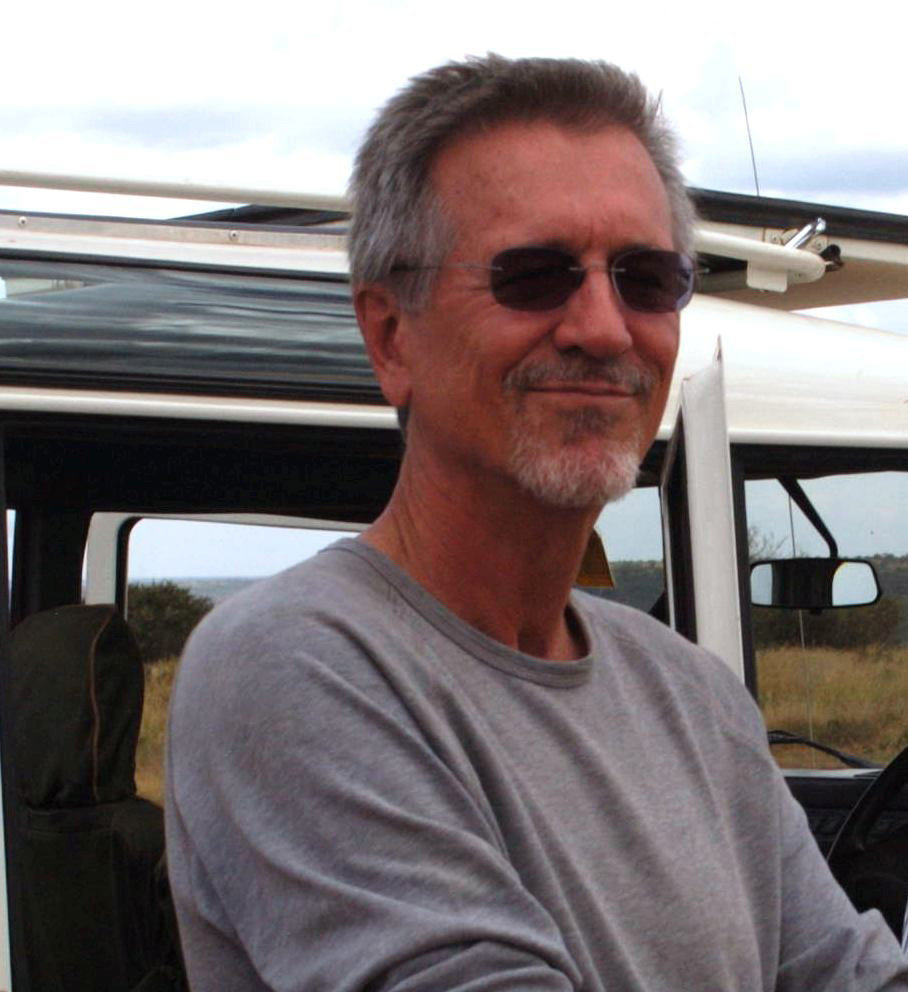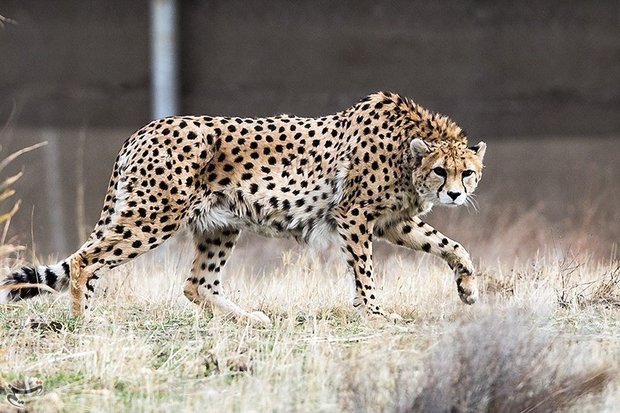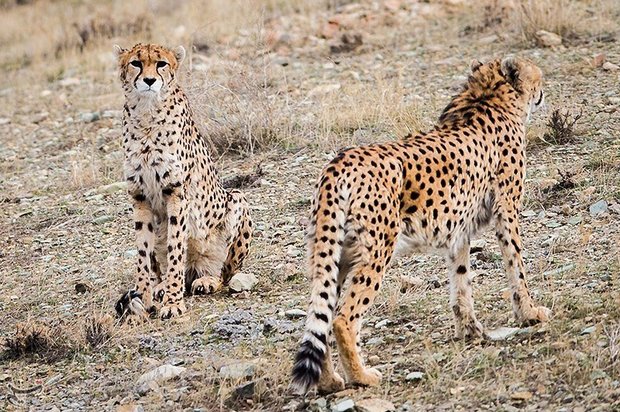‘It will take a lifetime of dedication to save Asiatic Cheetah’

The Asiatic cheetah also known as Iranian cheetah is a Critically Endangered cheetah subspecies surviving today only in Iran. It once occurred from the Arabian Peninsula and the Near East to the Kyzylkum Desert, Caspian region, Pakistan and India, but has been extirpated there during the 20th century.
The Asiatic cheetah survives in protected areas in the eastern-central arid region of Iran, where the human population density is very low.
The cheetah/livestock interactions and the presence of human beings and guard dogs in cheetah’s habitats, road accidents and habitat fragmentation due to human encroachment are of the threats making the cheetah’s future uncertain.
Tim O’Brien is a Senior Scientist of Wildlife Conservation Society (WCS) and Conservation Fellow of Zoological Society of London. He has received MSc. Wildlife Biology, Masters of Statistics, and PhD Wildlife Ecology.
He has been working for the Wildlife Conservation Society since 1990 and his primary areas of expertise include large mammals, bird communities, wildlife monitoring and statistics. He has worked on large carnivores in Sumatra, Indonesia, Iran, and Kenya, as well as assisted in analysis of carnivore data in Bolivia and Lao PDR. He has also worked on primates in Venezuela, Kenya, Indonesia and Lao PDR, studied large frugivores birds and bird communities in Indonesia, Kenya and Rwanda and worked on design, execution and analysis of monitoring program for many species and communities in more than a dozen countries.
Additionally he has developed new applications for camera trapping and analytical methods for camera trap data. These include applications for the study of birds, wildlife communities and carnivores. He is skilled at the design, implementation and interpretation of camera trap studies for species richness, occupancy, abundance and density estimation and has extensive experience in line transect and point abundance surveys for birds and primates. He has authored and co-authored more than 100 scientific papers, two books and numerous technical reports.
The Tehran Times conducted an interview with Dr. Tim O' Brien as a professional person in the field of Asiatic Cheetah’s monitoring.

Q: You and Dr. George Schaller conducted preliminary surveys in the Kavir National park, the Khar-Touran Biosphere Reserve, and the Dar Anjir Hunting Prohibited Area, would you please tell me more about those surveys and also the results?
A: It was a very great pleasure to be able to work in with the Department of Environment (DOE) in the Kavir Desert. We visited most of the protected areas, spent time counting gazelle and orial sheep and wild goat, spent time training DOE staff on sampling methods. We also trained students. When the survey was conducted DOE staff drove 4,260 kilometers of line transects to count gazelle, spent 1,320 hours watching for orial sheep and wild goat, and deployed camera traps at 270 locations for 8,100 days – more than 22 years of effort – to try to count cheetahs and prey. Based on that survey, we found populations of gazelle are very low in the reserves; goitered gazelle were found only in one reserve and jebeer gazelle populations were under 250 in all but one reserve. Lack of gazelle has forced cheetahs to shift to Orial sheep and goats as primary prey. Sheep populations were distributed unevenly throughout the mountains of reserves; density ranged from 0.21 – 10.8/km2. Wild goat distributions also were clumped and density ranged from 0.06 – 5.5/km2. Cheetahs are rare everywhere we looked, with estimated minimum densities of one cheetah/2000 km2. Wolf, leopard, and caracal were as uncommon as cheetah, and we suspect persecution of carnivores is widespread.
Q: How large was the cheetah population when you visited Iran?
A: At the time I worked in Iran (2001-2004) the cheetah estimate was approximately 120 individuals.
Q: What is your opinion about surveys of IUCN assessors? (Jowkar, H., Hunter, L., Ziaie, H., Marker, L., Breitenmoser-Wursten, C. and Durant, S.)
A: I respect these colleagues and have worked closely with Luke Hunter and Sarah Durant in the past. The population has been close to extermination in Iran for a long time and stabilization is good news.
Q: Would you please elaborate why calculating the number of cheetahs in Iran is difficult?
A: The rarer a species or population becomes, the more difficult it is to accurately estimate the population size. Cheetahs roam over an enormous area in the mountains and plains surrounding the Kavir Desert. We require camera traps set up to represent the area in order to make accurate estimates.
Q: How reliable are camera traps for calculating the population size? Dr. Durant pointed to some setbacks of camera traps, what is your opinion?
A: No sampling method is perfect - even though many claim we can count animals with 100% accuracy, there are many reasons that we fail to detect animals that might be present. This is why we rely on good sampling designs and follow directions so that we can estimate the proportion of animals that we did not directly observe. Sarah is correct that camera trapping is not perfect, but if the project is carefully carried out, we can get an unbiased (accurate) estimate of population size, as well as an estimate of the uncertainty around our estimate. In Central America, female jaguars may use different trail systems than males, so if you do not account for that, you may miss females and underestimate population size. In Iran, at that time we photographed females, kittens and males.
Q: At the time (2001-2004) what was the main threats for Asiatic Cheetah?
A: Illegal killing, killing of prey species and roadkill's.

Q: Asiatic cheetah has direct competition with domestic livestock and also dogs (guarding or even ferals) in most of remaining range lands, how much this threat is important for critically endangered Asiatic Cheetah?
A: Cheetahs are killed in retaliation for killing livestock and are also killed by dogs and vehicles. When a species or population is critically endangered, every threat needs to be addressed. Equally important is the killing of cheetah prey. Without adequate prey populations, cheetahs are forced to eat livestock.
Q: What was your suggestions for critically endangered Asiatic Cheetah?
A: The protected areas need to be managed primarily for cheetah and their prey. Protection of gazelle, sheep, goats, and cheetahs must be top priority.
Q: How much time and work can save Asiatic cheetah from extinction?
A: It will take a lifetime of dedication to save the Asiatic Cheetah.
Q: Currently, a public-led campaign is trying to collect money to displace livestock from Touran National Park. As someone who has visited Touran National Park, what is your idea? How much these activities may help cheetahs?
A: I am not familiar with this campaign, but it sounds like they are trying to remove some of the threats. Livestock in a national park pose two threats: they compete directly with the cheetahs, natural prey by eating the grass and monopolizing water sources, and when a cheetah kills a sheep or goat, the chances that the herders will kill the cheetah increase. Predators and livestock co-exist best when there is adequate natural prey that the cheetah are not forced to rely on livestock as prey
